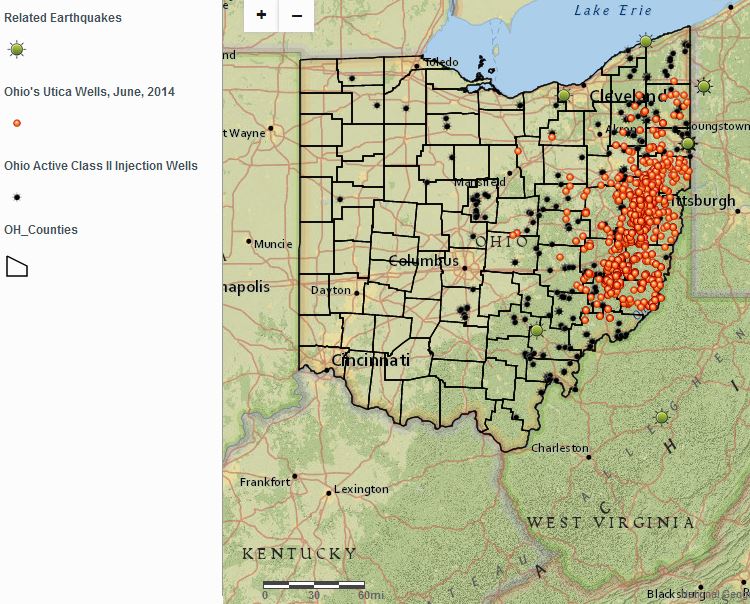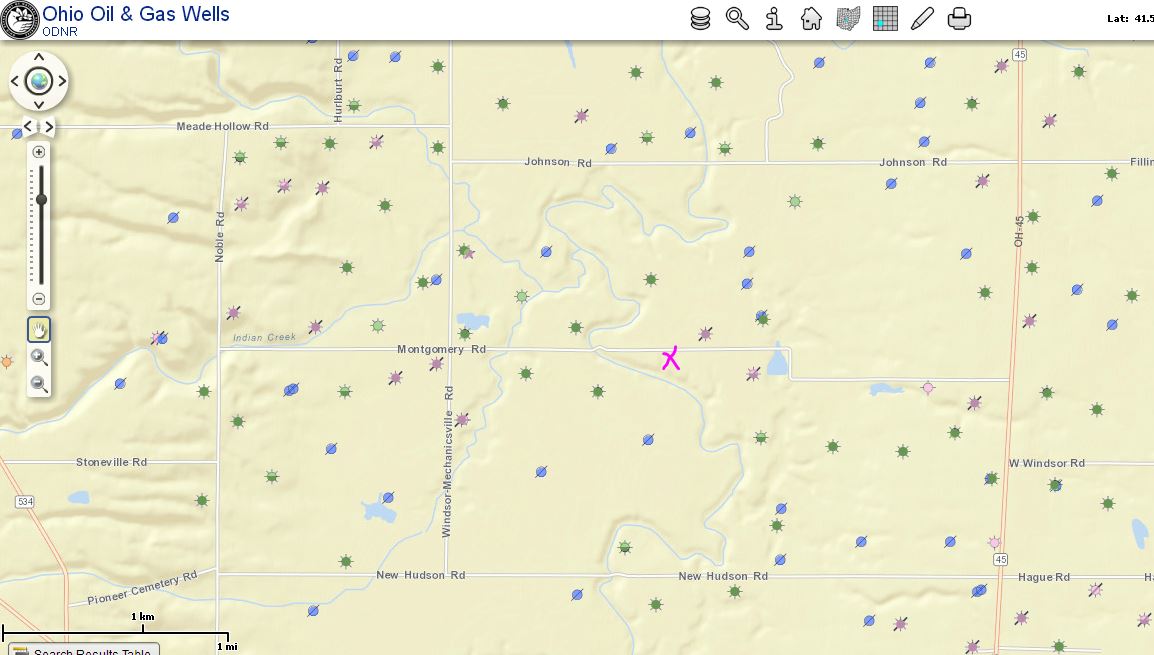Study: Methane in Ohio county’s water from coal beds, not fracking by Kathiann M. Kowalski, February 22, 2016, Midwestern Energy News
A multi-year study has found that coal beds, not fracking, are most likely to blame for methane found in water wells in an Ohio county. [The study doesn’t say frac’ing did not cause biogenic methane contamination in groundwater via shallow leaking of frac’d wells. It appears more and more that synergized researchers (enable frac’ing to keep their jobs, grants or promotions rolling?) have a habit of avoiding this big, expensive, impossible to completely fix problem when they study methane migration and fracing.

Alberta industry, regulator and expert research (using industry data) Reality Check:
2007:

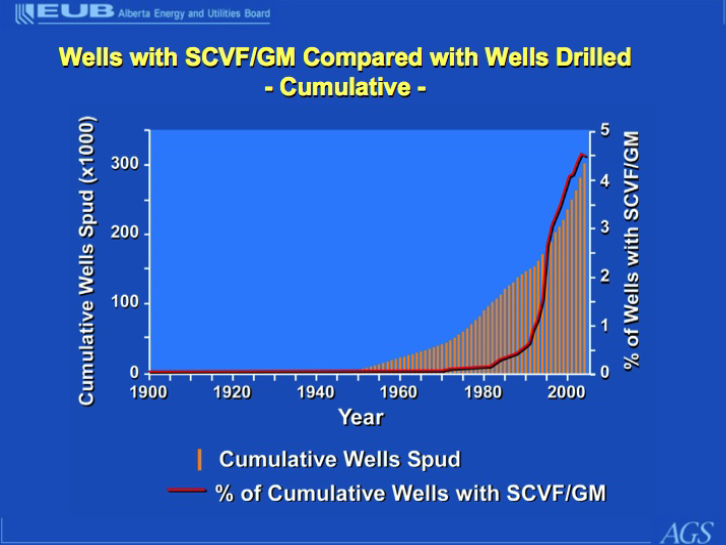
2008, presented in Paris, France:
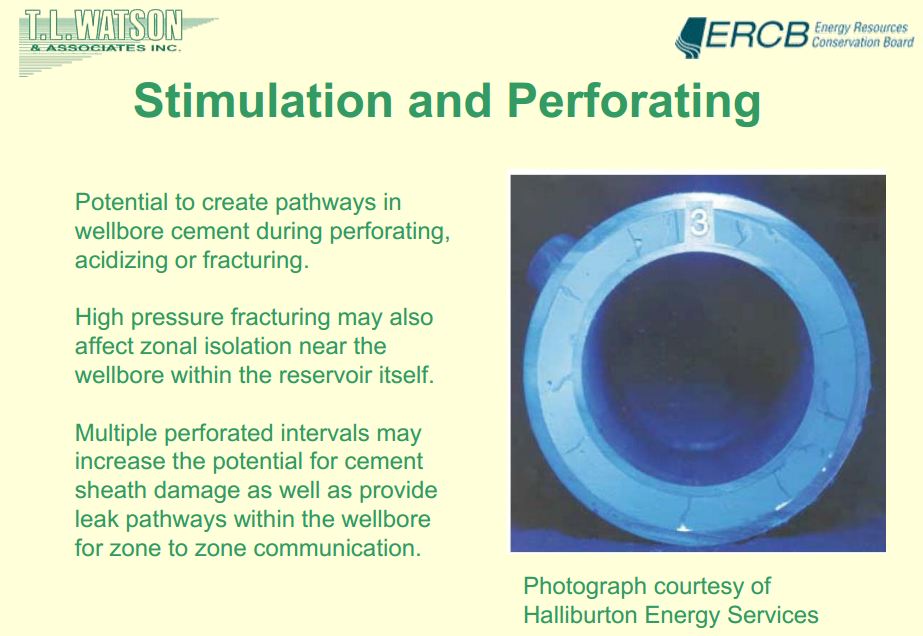
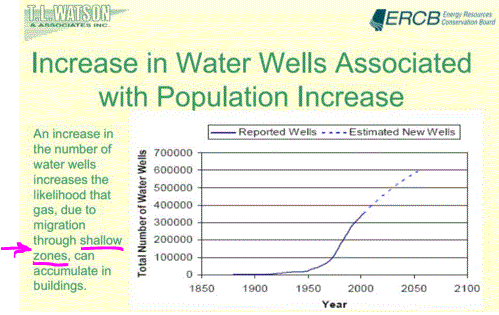
2011: Dr. Karlis Muehlenbachs presented in Washington that more than 70% of casing gases come from the intermediate layers of energy well bores, not the target zone:

2013:
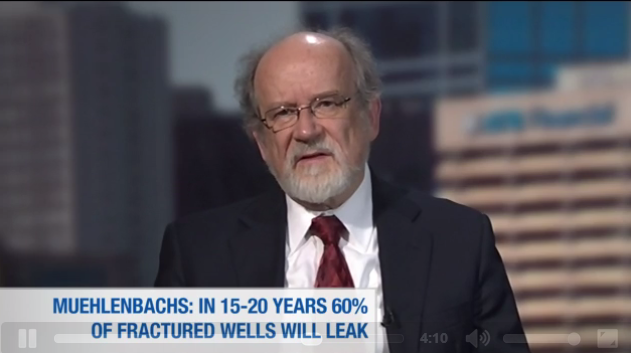
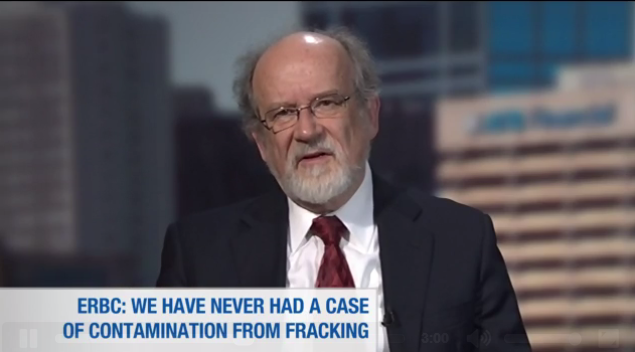
Typo by BNN in above screen capture. ERBC = ERCB, which is now AER (the Alberta government changed the regulator’s spots after the Ernst lawsuit) and was the EUB before the energy regulator was caught breaking the law and spying on innocent Albertans.
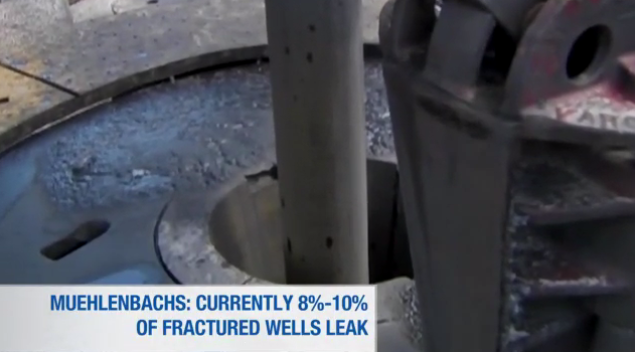

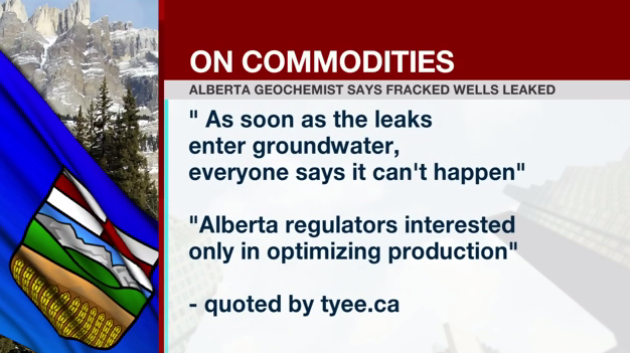

January 13, 2013: BNN interview with Dr. Karlis Muehlenbachs
End Reality Check]
But that doesn’t mean fracked wells won’t cause contamination in the future, said geologist Amy Townsend-Small of the University of Cincinnati. [Safe, enabling disclaimer?]
She presented the results from Carroll County in eastern Ohio at a February 4 meeting of Carroll Concerned Citizens.
Her work in documenting current conditions meshes with comments and recommendations for baseline well testing noted by a panel at the American Association for the Advancement on Science (AAAS) on February 14. That panel asked the question, “Does hydraulic fracturing allow gas to reach drinking water?”
“The answer to the question is usually ‘no,’ but there are exceptions,” said Robert Jackson, an ecologist and chemical engineer at Stanford University. [Synergy much Dr. Jackson?]
The researchers also noted that data provides a useful baseline for measuring any contamination that might result in the future from improperly drilled wells.
No significant increase
Oil and gas drilling in Carroll County and other parts of Ohio has expanded dramatically since 2008 due to the combination of horizontal drilling and hydraulic fracturing, or fracking. …
Concern about possible contamination led Townsend-Small and her colleagues to sample groundwater for acids, salts and methane over a three-year period. The project was motivated by a combination of scientific inquiry and citizen concerns in the area.
“Almost everyone relies on private water wells for their water supply,” Townsend-Small explained during a 2014 field visit for journalists set up by the Institute for Journalism & Natural Resources.
“Most of our samples were very low in methane, and a few were very high in methane,” she reported this month.
For example, half of the 96 wells in the May 2014 sampling round had less than 1 microgram of methane per liter of water. Another 30 wells had levels below 1 milligram per liter.
“We only had four samples that were above the dangerous level” of 10 milligrams per liter, Townsend-Small noted.
[Since the new “brute force, ignorant” fracing, why are regulators keep jacking up the “dangerous” concentration of methane in drinking water? If frac’ing wasn’t causing methane migration, wouldn’t regulators leave the danger level at 1 mg/l, as reported by CAPP in the ’90’s?]
[Compare to Encana-Aquifer-Frac’d Rosebud in Alberta:
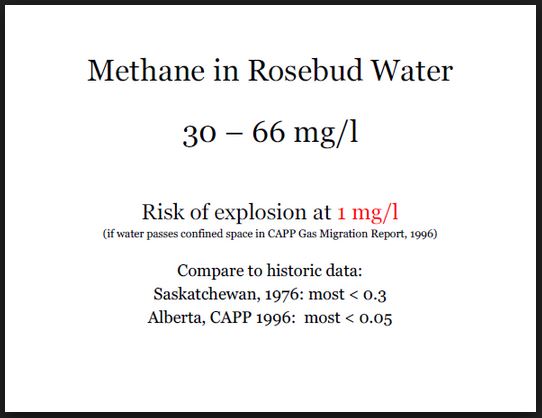
“We never saw a significant increase in methane concentration after a fracking well was drilled,” Townsend-Small added. [What’s industry allowing for the definition of “significant?”]
Analysis of isotopes from the methane that was detected suggested they did not come from drilled natural gas.
Rather, the chemical signatures suggested the gas was biogenic. In other words, it probably came from a biological source. [Or, from shallower leaking zones of energy wells or waste injection wells themselves or earthquakes caused by them?]
“Our data fall within the range of coal bed methane,” Townsend-Small said. That made sense to the researchers.
[Refer also to:
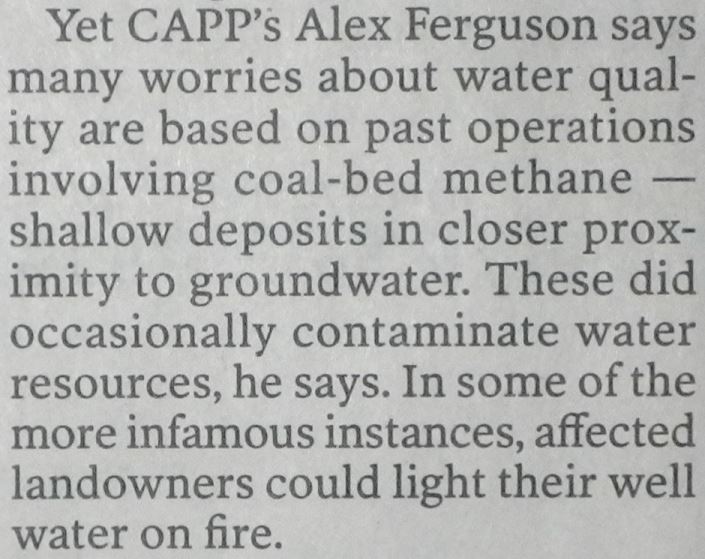
***
“This entire Appalachian area in Ohio has a history of coal mining, and there are subsurface coal seams throughout the area,” she explained.
Future monitoring
The latest study results were welcomed by the Ohio Oil and Gas Association with a favorable blog post on its website.
If methane levels were to rise significantly in the future, however, those results and the same type of analysis might be helpful to residents seeking to press a claim.
So far, Jackson said at the AAAS panel, cases that showed contamination from fracked wells have been instances in which wells were improperly drilled.
That was the situation when Jackson and his colleagues found contamination at various locations near Marcellus gas wells in Pennsylvania, for example. The Marcellus formation extends into Ohio.
“Our study does not refute the results of other studies that have linked fracking activity with contamination,” Townsend-Small said. “Our results only show that [“significant”] changes in the constituents we measured did not occur in the subsample of wells we sampled during our study.”
“These data will document that natural gas methane was not ubiquitous in eastern Ohio before the onset of fracking, as some people have claimed in other studies,” Townsend-Small stressed. “We also have amassed a dataset of pH and conductivity which show the natural (or at least pre-drilling) range of these constituents.”
It’s possible other problems could crop up down the road, she noted. For example, eastern Ohio still has a significant amount of drilling, so errors in that activity could result in contamination. Problems from corrosion or other factors might crop up down the road as well.
Many wells throughout the U.S. may have cemented casings extending below the groundwater table, but most are not fully cemented fully down to the shale formation, Nathan Wiser of the U.S. Environmental Protection Agency reported at the AAAS program.
Because of that, even if cementing extends below the groundwater table, a leak could let natural gas escape into layers closer to that depth.
“I hope that our study can illustrate the need for monitoring of groundwater resources in areas affected by fracking,” Townsend-Small said. “The people that live in rural eastern Ohio feel, rightly so, that they deserve access to clean water just like those of us who live in cities.”
If there hasn’t been baseline testing in an area before any problem arises, though, the “burden of proof is very hard” for a landowner to satisfy, Jackson said.
Yet not everyone may be able to have that type of testing done in Ohio or elsewhere.
“Unfortunately, the state and federal governments do not monitor groundwater, so it is the responsibility of each homeowner,” Townsend-Small said. “And sending samples out for professional testing can cost upwards of $500 per sample.”
Other scientists agree that baseline monitoring could be helpful.
“I think this would be great to do as part of a comprehensive gas and oil development plan,” especially before widespread horizontal drilling in an area, said environmental engineer Mitchell Small at the AAAS conference. The industry might benefit from such testing too, he suggested.
“I think that would have a big impact on trust,” Small said.
The author thanks the Institute for Journalism & Natural Resources for organizing the 2014 program that allowed her and other journalists to meet with Townsend-Small and various Carroll County residents in the field while the testing program was underway.
[Refer also to:
2011 02 16: Frac’d Gas-well ordeal in Bainbridge Ohio finally ends well
Forty-three households were involved in the class-action suit, and a lump sum was given to the residents, who then split it. The amount the residents received is confidential, Mr. Markowitz said. Bainbridge Township, which joined the suit, is to receive $50,000 for replacement of a water well and other expenses at its police station. A separate amount was given to Mr. and Mrs. Payne, whose house on English Drive was lifted off its foundation by the explosion.
Ohio Valley Energy and other companies involved with the drilling also paid off Nationwide Insurance, which had the coverage on the Paynes’ home. [Emphasis added]
2013 02 12: Bainbridge Ohio residents deal with contaminated water from drilling
“I never suspected such a thing would happen,” says Thelma. Many of the Payne’s neighbors also suffered a valuable loss: water. “You could actually see the gas bubbling up in the water,” explains Frances McGee, whose water well, along with dozens of her neighbors, was contaminated when gas leaked into the water aquifer.
“Many of them we found 100 percent explosive limits that the gas was actually in their wells,” says Assistant Fire Chief Wayne Burge. Ohio Valley Energy paid for drinking water to be supplied to affected familes and 1,500-gallon water tanks were put in garages. It took two years before residents around the gas explosion site were connected to city water. “All the people wanted was to be made whole by having water,” says Frances. “Without water, you really don’t have a home.” [Emphasis added]
Snap above from Ohio Department of Natural Resources Oil and Gas Well Viewer. Pink X marks 4033 Montgomery Road, location of the contaminated water well and fatal home explosion. About 35 wells are within a one mile radius of the home.
2016 07 17: Woman dead, man seriously injured in home explosion in Orwell Ohio; well on property with chronic leaking natural gas problems